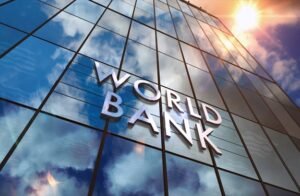 If you mention a cartel, most people’s minds go straight to Pablo Escbar and El Chapo. Drug cartels are not the only kind of cartels, however. There are other types of anti-competitive monopolies that fix market prices and manipulate supply and demand. In fact, one of the most egregious cartels is the money cartel that no one talks about: central banks and the Federal Reserve.
If you mention a cartel, most people’s minds go straight to Pablo Escbar and El Chapo. Drug cartels are not the only kind of cartels, however. There are other types of anti-competitive monopolies that fix market prices and manipulate supply and demand. In fact, one of the most egregious cartels is the money cartel that no one talks about: central banks and the Federal Reserve.
Now, before you start running away crying “conspiracy,” answer me this: have you ever looked up the definition of a cartel? Investopedia tells us, “A cartel is an organization created from a formal agreement between a group of producers of a good or service to regulate supply in order to regulate or manipulate prices.” Hmm, what group of private entities could possibly have formed an agreement to regulate the supply of money in order to manipulate the price of the dollar? A real head-scratcher, that is.
How the monopoly was secured
We’ll get into the means by which the Fed and the central bank operate as a cartel. But first, it’s helpful to understand how the Fed was formed in the first place.
Jekyll Island
In the early 1900s, economic instability from over-leveraged investments created financial panic that caused bank runs where everyone tried to withdraw their bank funds at the same time. As a result, several banks defaulted for lack of reserves. This shock to the financial system was a catalyst for the creation of the Federal Reserve.
A couple of years later, a senator from Rhode Island “took matters into his own hands” and secretly met with a group of private bankers on Jekyll Island. This is where they devised a plan to create a banking collective of privately owned reserve banks that would work together with the central bank and the board of governors to control US currency and set monetary and regulatory policy. The legislation they drafted was signed into law by Woodrow Wilson in 1913—and the system is still in place to this day.
 Any old history of the Fed will tell you that the 12 regional federal reserve banks have “a blend of public and private characteristics,” which serve to decentralize the banking system. However, there’s one glaring problem: true decentralization requires transparency, which the Fed does not have. But you know what doesn’t require transparency? Cartels.
Any old history of the Fed will tell you that the 12 regional federal reserve banks have “a blend of public and private characteristics,” which serve to decentralize the banking system. However, there’s one glaring problem: true decentralization requires transparency, which the Fed does not have. But you know what doesn’t require transparency? Cartels.
Funding wars
Once the Fed was created, it took a bit of time to really cement its monopoly on the American monetary system. What helped to lock down its complete control over the money supply was, and is, war.
During WWI, the Fed reduced reserve requirements so that it wasn’t required to hold as much collateral on debt. It then allowed central bank debt to back the Fed’s debt and added war bonds to the balance sheet, thus allowing it to increase the money supply. This sly and subtle way of diluting the value of money through inflation is the least obvious of the three ways the government raises money: taxes, debt, and inflation.
War is one of the most effective ways to convince the public to accept more debt and increase inflation. The people will protest taxes and they will protest “unnecessary spending,” but if a war is pitched as required for safety and security, the government can create debt with impunity—and that’s what it does.
Players in the money cartel
 While the US central bank and the Federal Reserve dominate the US money supply and regulatory policy, they’re also two of the big players in the global money cartel along with others that we should briefly mention.
While the US central bank and the Federal Reserve dominate the US money supply and regulatory policy, they’re also two of the big players in the global money cartel along with others that we should briefly mention.
IMF and World Bank
The International Monetary Fund (IMF) was created with the World Bank in the 1940s to help prevent economic catastrophes like the Great Depression. Member countries pay membership dues to the IMF, gain voting rights, and can ask for help when they’re in trouble. It also oversees the global monetary system for exchange. The World Bank provides financial assistance to developing countries. Both are involved in global economic planning.
US House and Senate
The legislative part of the global money cartel involves the house and the senate, which conduct oversight and pass laws that affect regulatory policy. The Federal reserve is required to submit semiannual reports on monetary policy to the banking committee.
G-20
The largest economies in the world created the G-20 forum which, “Promotes global economic growth, international trade, and regulation of financial markets.” This group does not create regulatory policy but it does influence the decisions made by governments and central banks globally.
Corporations
Though they’re not part of the government, private corporations like Google, Amazon, and Facebook have been known to help the money cartel enforce its controls on consumers. As we’ll discuss later, Robinhood is one of those companies.
Modern-day abuse
Banks in our modern money cartel have given themselves three important jobs, according to Llewellyn H. Rockwell Jr.: 1) being the lender of last resort—meaning bailouts, 2) coordinating the inflation of money to stabilize the system, 3) using inflation to “finance their operations far more cheaply and surreptitiously than they otherwise could.” Much the way a money cartel would.
If you’re not convinced that the government and the Federal Reserve are not benevolently trying to secure and stabilize the economy for their beloved citizens, join me in perusing a few examples of cartel-like behavior.
Bailouts
Since the banking system was put in place in the early 1900s, the government has acted as the lender of last resort when economic times get rough. From the Great Depression to the 1989 Savings and Loan bailout, the government has always been there to “catch the people’s fall.” While it is true that failing to bail out war debt, ill-advised investment risks, and market corrections would cause a lot of economic pain, the (possibly worse) result of bailouts is inflation and the devaluation of the dollar. And, ironically, the more debt the government creates, the more control it has as a money cartel because everyone owes everyone dollars, ensuring demand stays artificially high.
The GFC
One of the most notorious government interventions happened during the global financial crisis (GFC) in 2008. This really eroded public trust in banks and the government. After the housing bubble popped, the money cartel enacted sweeping economic interventions and bailouts before even completely understanding what was happening. Quantitative easing increased the Fed’s balance sheet from $900 billion to $4.5 trillion between 2008 and 2015, and many citizens were disenchanted, coming to understand that protecting banking and investment institutions and pushing inflation were the two highest priorities of the government, hidden under the guise of “stablizing the economy.”
GameStop
 Creating debt isn’t the only way the money cartel controls everyone in the market. If you were paying attention in early 2021, you likely heard about the GameStop short squeeze. Led by redditors on r/wallstreetbets, retail investors hatched a plan to short squeeze GameStop and stick it to hedge funds that were trying to short the stock. It became headline news when retail investors actually managed to drive the price of GameStop up, squeezing hedge funds out of their short positions. Controversy ensued when Robinhood, a popular retail trading app, blocked GameStop trading during the height of the frenzy. Many people called out institutions and the powers that be (TPTB) for colluding to put a damper on banker and hedge fund losses.
Creating debt isn’t the only way the money cartel controls everyone in the market. If you were paying attention in early 2021, you likely heard about the GameStop short squeeze. Led by redditors on r/wallstreetbets, retail investors hatched a plan to short squeeze GameStop and stick it to hedge funds that were trying to short the stock. It became headline news when retail investors actually managed to drive the price of GameStop up, squeezing hedge funds out of their short positions. Controversy ensued when Robinhood, a popular retail trading app, blocked GameStop trading during the height of the frenzy. Many people called out institutions and the powers that be (TPTB) for colluding to put a damper on banker and hedge fund losses.
COVID and QE
Similar to the way war-cost justifications about safety and stability allow the government to steal from Americans with their consent, a similar narrative has surrounded trillions of dollars of COVID stimulus and quantitative easing. While many try to wave away huge increases in the money supply through quantitative easing as “drastic” and “rare,” the money printing has only sped up since the GFC, which shortly after, saw the creation of Bitcoin and cryptocurrency as a way to escape the centrally controlled money cartel.
Conclusion
It doesn’t take a trained eye or a mind for conspiracy to see that, while the government may claim it has special, exempting privileges, its actions are undeniably like those of a cartel. From its very creation, it was intended to keep the reins of control squarely in the hands of small and powerful groups of people. Whatever regulatory policy is crammed down the throats of businesses and individuals, TPTB don’t want the general public to maintain their sovereignty in a free market economy. But, that’s why we hodl crypto.
About the Author

Michael Hearne
About Decentral Publishing
Decentral Publishing is dedicated to producing content through our blog, eBooks, and docu-series to help our readers deepen their knowledge of cryptocurrency and related topics. Do you have a fresh perspective or any other topics worth discussing? Keep the conversation going with us online at: Facebook, Twitter, Instagram, and LinkedIn.


